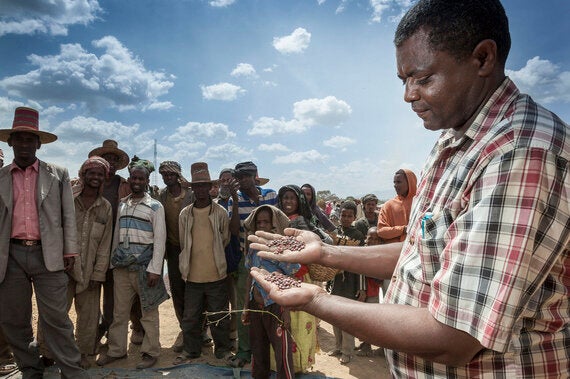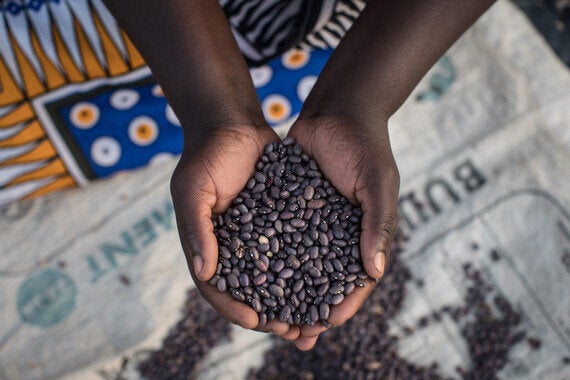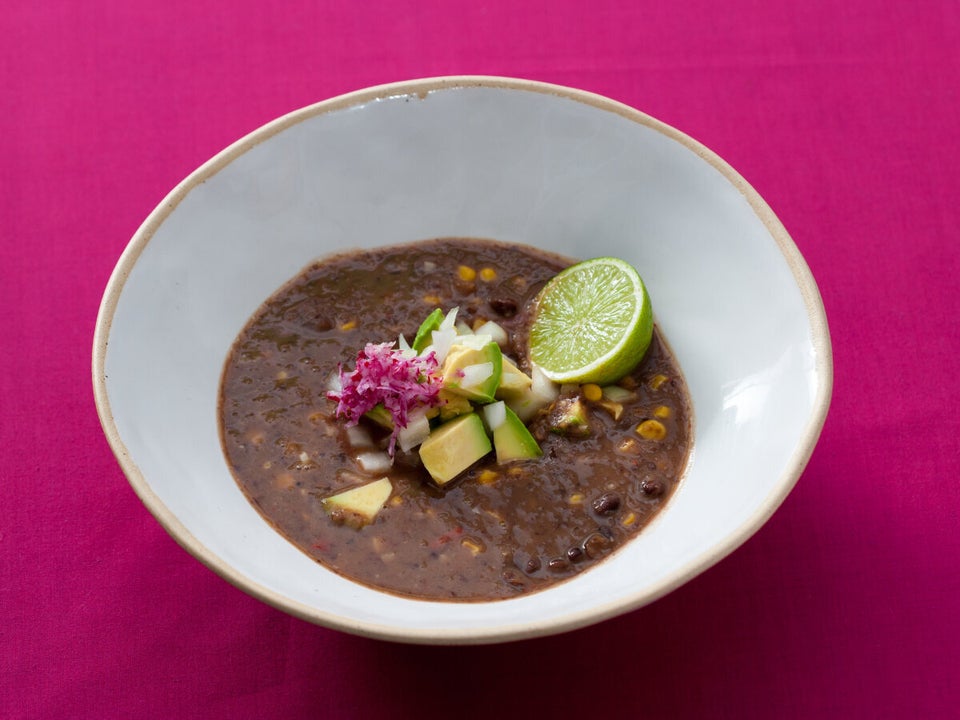
By Laura Husak
Pulses are a family of crops that include dried beans, peas, lentils and chickpeas; collectively, they are extremely important to nutrition, health and livelihoods. While 2016 -- celebrated as the International Year of Pulses -- has come to a close, it remains imperative that we continue building awareness of the role pulses can play in improving food security, nutrition and agricultural sustainability.
Over the past two decades, Canada has turned pulses from a low-production crop into a key agricultural product: the country is now the world's leading exporter of pulses, Canada's fifth-largest crop. Building on its expertise, Canada can show leadership on global food security and nutrition by continuing to support pulse production and consumption around the world.
Globally, pulses are essential to achieving resilient agricultural systems and healthy diets. However, there remains a large gap between current pulse production and the significant potential of pulse crops for meeting global sustainability challenges. Addressing barriers to pulse consumption through the development of new pulse varieties, production methods and food products is key to tapping into the full potential of pulses.
Globally, pulses are essential to achieving resilient agricultural systems and healthy diets.
Pulse research is making an impact
Since 1976, Canada's International Development Research Centre (IDRC) has invested almost $29 million in 68 projects on pulse research. This research led to new varieties of pulse crops with improved nutritional qualities, expanded coverage of information services to increase pulse cultivation, and supported pulse farmers and agribusinesses to process and market their crops to consumers.
Pulse research has enabled farmers to enjoy many benefits of growing pulses, including the nitrogen-fixing characteristics pulses bring to soil, lowering fertilizer costs for farmers. Pulses require 20 times less water than animal products to grow; and in times of drought, this resilience provides a buffer if other crops fail.
Pulses have great potential for human nutrition due to their high protein content compared to other vegetables -- they are high in dietary fibre, rich in minerals and iron, and low in fat, helping lower blood pressure and reducing the risk of heart disease. Pulses are an important source of income for women, who are mainly involved in their production and marketing.
Despite this, global research funding for pulse crops remains very small compared to investments made in cereal crops. As a result, global pulse production has remained relatively stagnant. Coordinated pulse research investments are needed to better leverage existing funding and to expand knowledge on climate-smart agriculture, water efficiency, crop diversification, and pest and disease management.

Long cooking time required for their preparation (up to three hours) and resulting fuel and water related costs represent another barrier to pulse consumption. In Uganda and Kenya, one project funded by IDRC and the Australian Centre for International Agricultural Research supports a public-private initiative of pre-cooked beans, an affordable and fast-cooking new product which is boosting the consumption of nutritious pulses. Increased demand for pre-cooked beans is creating a more lucrative market for 24,000 bean farmers and creating jobs in processing and distribution. As reported by Reuters, this product is attractive for consumers because it requires less time, water and firewood for cooking -- meaning reduced preparation costs and less stress on dwindling forests.
With the support of IDRC and Global Affairs Canada, researchers from Ethiopia's Hawassa University, together with a team at the University of Saskatchewan, developed varieties of chickpea and haricot that increase productivity between 62 and 89 per cent over local varieties; these are already grown by more than 36,000 farmers.
Containing higher levels of zinc and iron, these varieties are targeted to people most in need of enhanced nutrition: mothers, infants and young children. Nutritional education on complementary feeding (the process of integrating other foods and liquids along with breast milk to meet infant and child nutritional requirements) is resulting in positive impacts, such as improved weight gain for children.
Canada-based Farm Radio International is working with IDRC partners in Ethiopia and Tanzania, using radio, mobile phones, Internet and comics targeted at youth, to share knowledge about growing and eating pulses. The goal of these and other initiatives is to increase the availability, accessibility and use of pulses, while ensuring the livelihoods of farmers are supported in the face of a changing climate.

Getting a pulse on the next steps
IDRC and partners have convened a high-level group of public and private sector experts to develop an internationally coordinated pulse crop productivity and sustainability research strategy for the next ten years. Canada can share knowledge and expertise through engaging in global and regional networks of scientists and industry players. Essential pulse research investments can be accelerated by fostering consensus on priority investments, setting an agenda for global discussion and mobilizing leaders to advocate for funding.
Jan. 18, 2017 is Global Pulse Day, the annual legacy of the International Year of Pulses and an opportunity to celebrate progress and further collaboration to promote pulses. Together with its regional offices in Cairo, Delhi, Montevideo and Nairobi, IDRC will showcase the diversity of pulse dishes across the regions by having pulse-based lunches.
We hope that you will do the same!
By Laura Husak (Program Management Officer), with the collaboration of the Agriculture and Food Security team at Canada's International Development Research Centre (IDRC).
The views expressed are those of the authors and do not necessarily reflect the views of CCIC or its members.
Follow HuffPost Canada Blogs on Facebook
Also on HuffPost:
